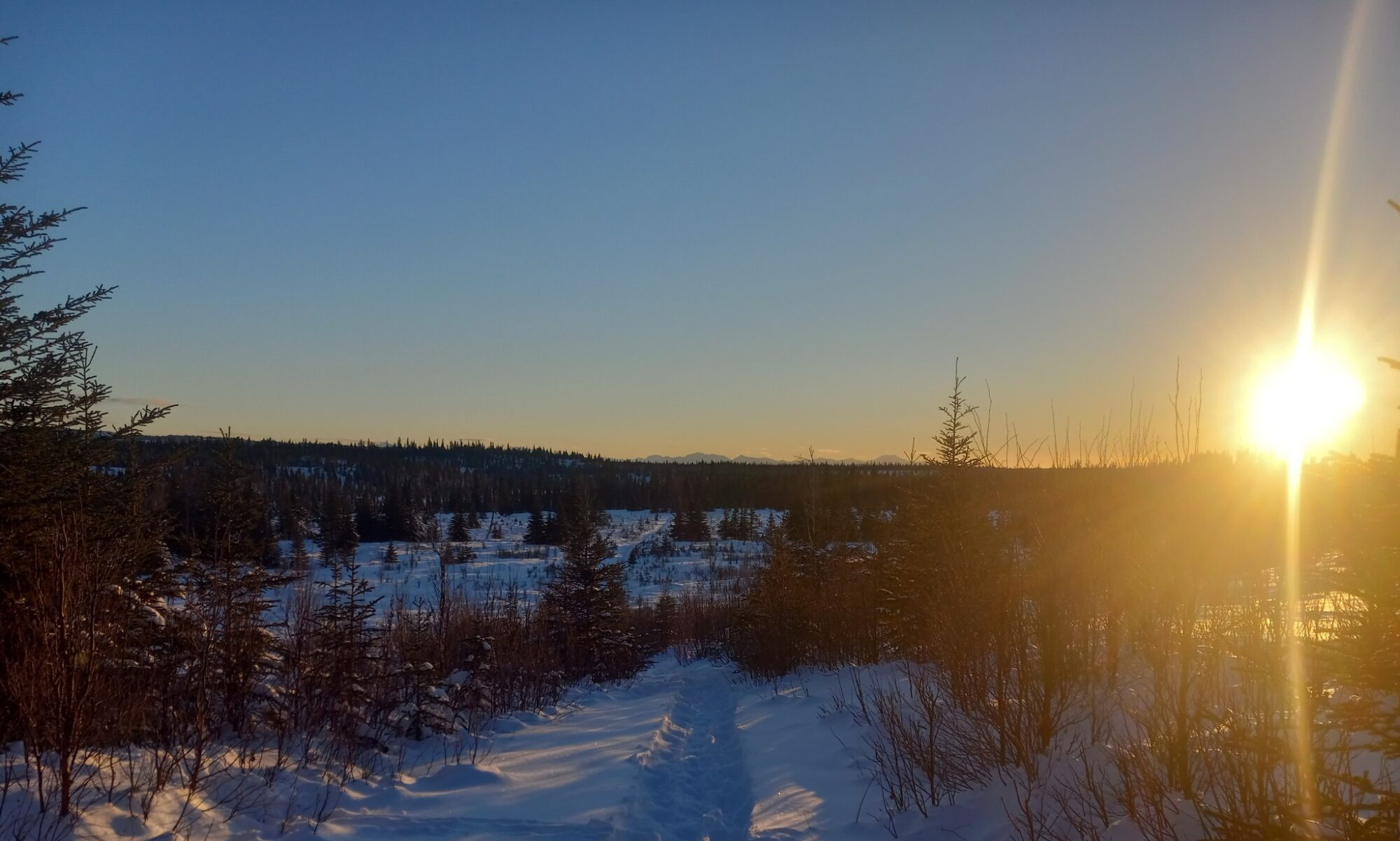I make no secret about being very into this off-grid living thing—I did write that “Practical Guide to Off-grid Living in Alaska” and we have lived off-grid in a variety of situations around the state, including our current location at the end of a very long unmaintained road.
Consulting
Not sure how to best use your land? Want advice on a parcel you are considering buying? People have sought my advice on these things many times. You can too. Get in touch if you want and we can talk about it.
Projects
While the idea of sustainability has fascinated me for a long time, and while I may try to promote more sustainable off-grid living anywhere (especially in Alaska), much of my spare time is spent on improving the sustainability of my immediate area, including the lots I own in my neighborhood.
I do like to share with neighbors—advice, plant starts, favors and work trades—but I focus more on developing resilience on my acreage, including developing orchards, experimenting with plant species new to the area (mostly food-producing perennials), developing hugelkultur mounds and mini-hayfields, encouraging selective forest re-growth (since the area was previously logged), green building projects, and more. Some of these projects are done, others are underway, and some can never truly be finished.
In the future, we do plan on opening some WWOOF-type “internship” opportunities for those interested in learning how to do these things. Please get in touch if you want.
Land
I also keep my eye open for parcels of land with good off-grid living potential. If I find something I think is a good deal, I will sometimes buy it, analyze it, figure out the best ways to access and use it, and resell it with owner financing (always with 0% interest). Because I don’t have much spare cash at any given time, I might have not have anything available to sell, or maybe just one or two lots. While this might make me some profit (it hasn’t always), the benefits include:
- Financing makes parcels like these affordable for some that otherwise might not be able to afford it.
- I have done the legwork to only buy quality parcels and weed out those that might have poor soils, access issues, hazards, etc.
- Instead of simply looking at “price per acre” as a system of valuing a parcel of land (i.e. quantity), I focus on quality. Some of these considerations include:
- Resources immediately available (i.e. lumber, berries, fish, wildlife, water).
- Resources available nearby on public land.
- Quality soils with good drainage and agriculture/gardening potential.
- Bordering public land (always a plus, but not always available).
- Viable access (sometimes lots are remote, sometimes not—but even remote lots will have easier access as far as remote lots go).
- Regional climate (including wildfire likelihood), including temperatures, growing zones, and precipitation.
- Southern exposure.
- Other specialized knowledge based on experience and research (like whether or not a bunch of weirdoes live in the area, or if there are abandoned toxic mines in the area—things like that).
When sellers and assessors value a piece of land, they don’t always take these things into account. Their formulas usually focus on total acreage, (maintained) road access, utilities, water frontage, and view, so a parcel might look like an amazing deal but be a giant waste, or vice versa—I focus on finding those that are undervalued based on their potential (otherwise I wouldn’t be able to break even).
———————————
Currently available: Lot 5, Block 9, Snake Lake Subdivision
9.6 acres; currently asking $15,900 (3,900 down, then $300/month for 40 months with no interest)
Note: I initially sold this lot last year but recently repossessed it after completing the foreclosure process.

Watch the informational video:
Watch on YouTube (lots of links in the description beneath the video!)
This lot would be perfect for someone who wants a remote homestead, a hunting camp with easy access to wilderness, a jumping-off point for the Togiak NWR wilderness area (or Wood-Tikchik State Park); it would also be a fun recreational lot for someone that lives and/or works in the Dillingham area. The area is ridiculously beautiful, very quiet (not on the road system, but a quick flight from Anchorage), and mild (climate-wise) by Alaskan standards.
Pros:
-
- There are no snakes in Snake Lake. Or in Alaska, for that matter.
- No restrictions, covenants, or property taxes (not in an organized borough).
- Bordered by state land on the west for a short distance, then by literally millions of acres of wilderness area in the Togiak National Wildlife Refuge.
- Small creek runs through the property.
- Good soil by local standards—well-drained gravelly loam till.
- Amazing views. One of the most beautiful places in Alaska.
- Lots of wildlife, including caribou (2 local herds), moose, bear, wolf, beaver, lynx, etc.
- Excellent local fishing (you want to get salmon from the bay, though—they get in worse shape the farther upstream they have to swim). Bristol Bay has the largest wild sockeye salmon runs in the world.
- Local town (Dillingham) has a large airport, daily flights from Anchorage, hospital, schools, stores, a University of Alaska extension, friendly people, and lots of fishing jobs in summer. It is also a regional hub for many surrounding villages.
- You can drive to the lake from Dillingham.
Cons:
- You cannot drive to Dillingham from the rest of Alaska.
- The lot is remote. Transporting things there would be tricky, and building materials are expensive in Dillingham (though there are local trees available on state land that could be used for building).
- You would need a snowmachine for winter access and a skiff or plane for summer access.
